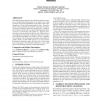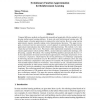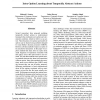80 search results - page 13 / 16 » Efficient Reinforcement Learning Using Recursive Least-Squar... |
ACL
2010
13 years 5 months ago
2010
In this paper, we address the task of mapping high-level instructions to sequences of commands in an external environment. Processing these instructions is challenging--they posit...
ATAL
2010
Springer
13 years 7 months ago
2010
Springer
PAC-MDP algorithms approach the exploration-exploitation problem of reinforcement learning agents in an effective way which guarantees that with high probability, the algorithm pe...
CORR
2010
Springer
13 years 7 months ago
2010
Springer
Temporal difference methods are theoretically grounded and empirically effective methods for addressing reinforcement learning problems. In most real-world reinforcement learning ...
ICML
1998
IEEE
14 years 8 months ago
1998
IEEE
tion Learning about Temporally Abstract Actions Richard S. Sutton Department of Computer Science University of Massachusetts Amherst, MA 01003-4610 rich@cs.umass.edu Doina Precup D...
ICML
2010
IEEE
13 years 5 months ago
2010
IEEE
Temporal difference (TD) algorithms are attractive for reinforcement learning due to their ease-of-implementation and use of "bootstrapped" return estimates to make effi...



